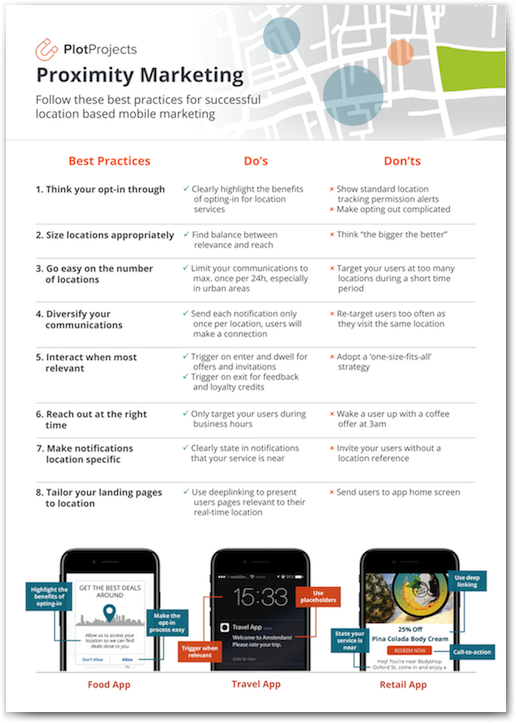Now that you have set up locations to target your app users (if you haven’t – check out 3 Tips on Where to Put Your Geofence), you can proceed to setting up your location based push notifications.
Location based push notification are indeed more relevant for your app users because they are already optimized for location and time.
However, there is a number of things that can ruin the app experience for your users and make your notifications seem frustrating and annoying instead of useful and relevant, even if they are perfectly targeted by time and location. Find out what they are and how to avoid them.
1. Not Using Placeholders in Notifications
What are placeholders? Let’s use an example to understand what they are.
Notification Message: “You are near {geofence name} (geofence name would be a placeholder and it will be replaced by e.g. Costa Coffee in Kings Cross when the message is sent), get 10% off today!”
Using placeholders is helpful in 2 ways:
First, it makes your notifications clearer. It helps your app users understand that your notifications are location-based – they should know that your service is currently near to them. It will make the notifications more relevant to them and thus will increase the chance of them opening the notifications.
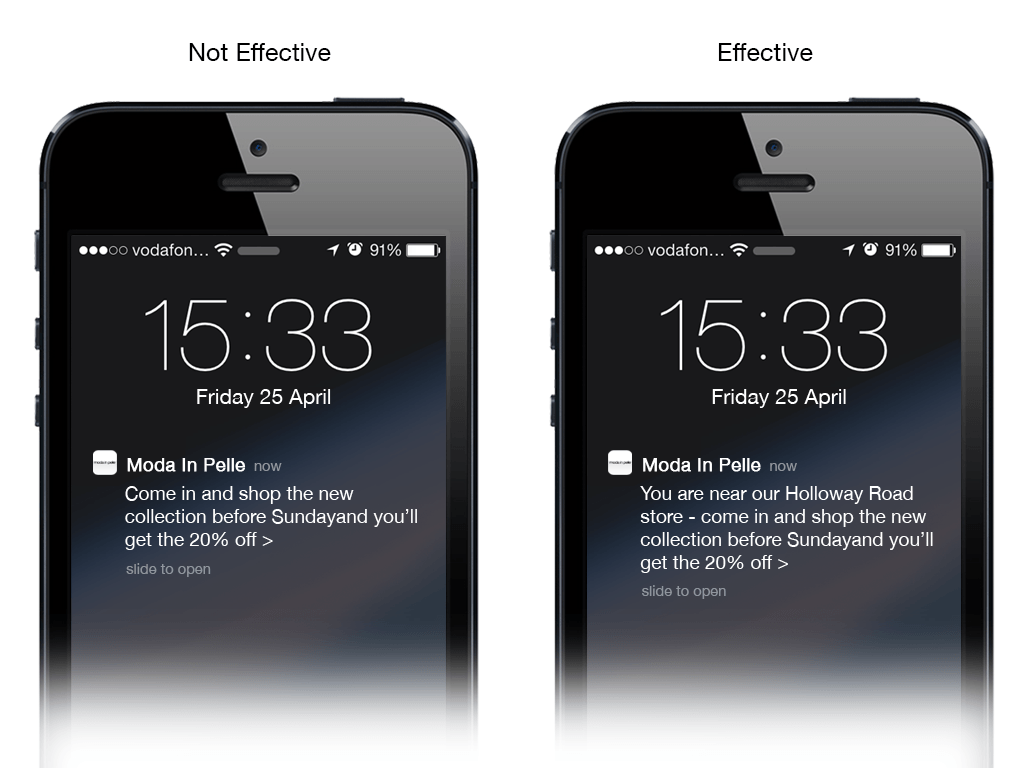
Second, using placeholders will help you make the process of creating location-based notification campaigns more scalable – instead of creating a separate message for every single location you are targeting, you can create one which is automatically optimized for all the locations in your campaign.
So make sure you add placeholders consistently to your notifications.
2. Not Attaching Custom Links to Notifications
Whenever you reach out to your app users with a location based push notification, for them that interaction doesn’t just end with that notification. If they click it open, they arrive to your app. More often than not users are just taken to the home page within the app. This is a disastrous rookie mistake in terms of the contextuality of your app experience.
Specify exactly where a user is to be sent, when he responds to a notification e.g. a webpage or to a specific location in the app. This can easily be done by attaching custom links to your location based notification, making sure that a page relevant to user’s real-time location appears within your app once the user opens the notification. This guarantees a smooth app experience and higher engagement.
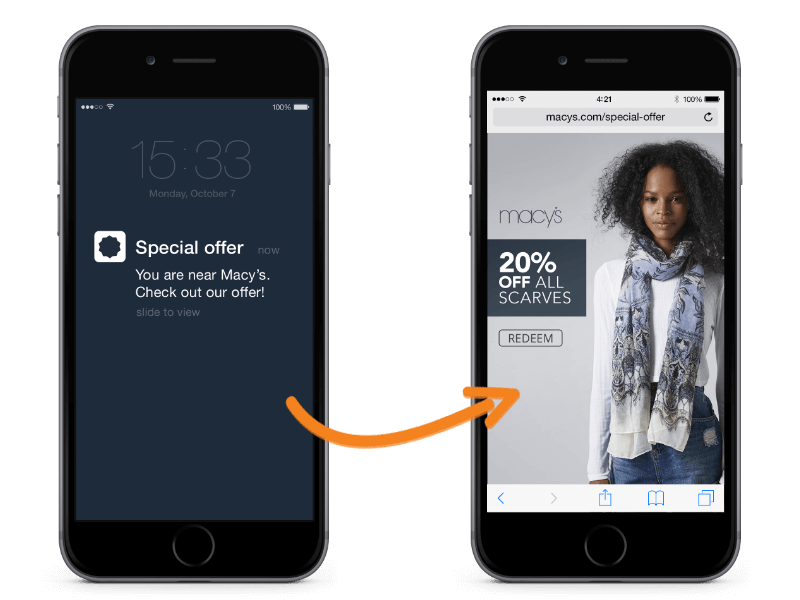
3. Not Specifying When to Send Notifications – on Enter, Exit or Dwell
At which point you come in contact with app users matters a lot. It has to do with the ultimate goal of your location-based communications – do you want to drive loyalty, increase engagement, or gather feedback. Based on your goal, you need to specify when to send notifications to app users – when they enter, exit or linger in a place for a period of time.
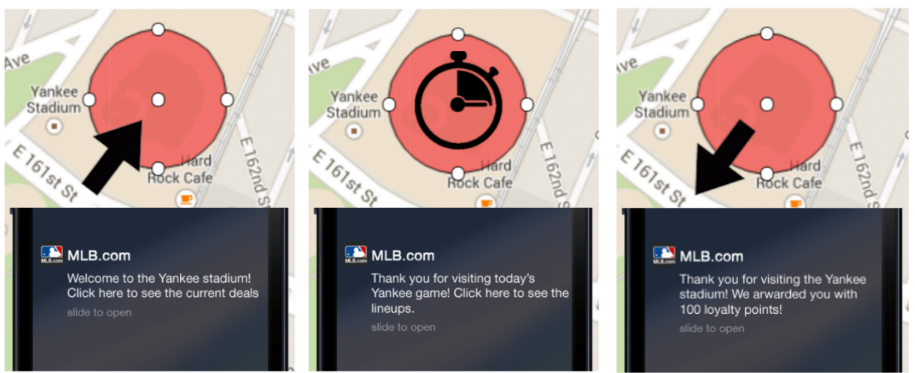
Notifications sent upon exit from a certain place are usually used for gathering customer feedback or driving loyalty by for instance rewarding them with store credits or thanking them for visiting.
Sending app users notifications once they enter the region you are targeting or after they have spent a certain amount of time in there (or dwelled) would be the most appropriate tactic for increasing app engagement. In fact, dwell is a better indicator of whether or not you should reach out as if an app user had lingered in certain place as it means that your information would be of more value to him as opposed to someone that might have just been passing your location by.
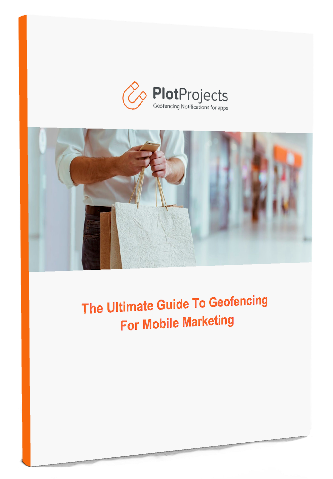 |
Want to know more about geofencing?Download the Ultimate Guide to Geofencing for Mobile Marketing to find out more about geofencing and beacons and why to use them in your app. |

